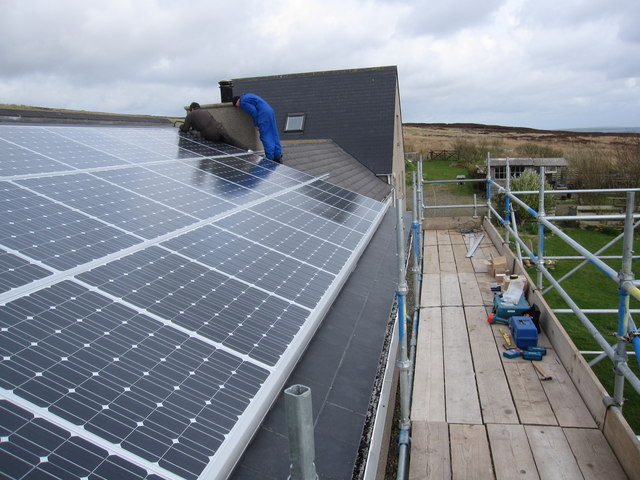How the FIT works and how it can benefit you
If you may have noticed, in recent years, the UK government has been stepping up its drive for energy efficiency. As a matter of fact, there are many different schemes in place that encourage consumers to rely more on renewable energy – and one of the more popular schemes is the Feed-in-Tariff.
What is the Feed-in-Tariff?
Simply put, the Feed-in-Tariff programme is a programme that was launched in April of 2010 as a replacement for government grants in order to give consumers an incentive when they opt for renewable energy technologies. Technologies which allow consumers to qualify for the FIT include solar energy systems or PV systems, wind turbine systems, anaerobic digesters, hydroelectricity, and micro-combined power and heat.

geograph.org.uk/photo/2326513
The Department for Energy and Climate Change, or DECC, is the bureau in charge of the scheme’s policies, while Ofgem is the one in charge of administering the scheme.
When you qualify for the scheme, there are two ways in which you can receive the FIT benefits: one is through the Generation Tariff, and the other is through the Export Tariff.
How the Generation and Export Tariffs work
The generation tariff is the payment you will receive from your energy supplier for the amount of electricity or kWh you produce and use. The payments for the generation tariff continue for up to twenty years, and are also index-linked. The tariff rate you can expect to receive varies depending on the renewable technology you opt for. There are different generation tariff rates for solar panel systems, for wind turbine systems, and the like.
The export tariff, on the other hand, is the payment you can expect to receive from the energy supplier for the electricity you produce but do not use. In effect, you are ‘selling’ your electricity back to the supplier. For this, there is a standard amount of 4.77 pence per kilowatt hour regardless of what kind of renewable technology you have.
Of course, another benefit when you opt for renewable technology is the savings you get from your energy bill as well. Since you will be producing your own electricity, your electrical consumption from your supplier will be reduced, thus resulting in a lower energy bill. Again, the amount of savings you have will depend on the technology you have.
How to register for the Feed-in-Tariff
First of all, you should choose an installer who is MCS-accredited. Once your system has been installed, the installer will then register you with the MCS’ database and present you with a certificate which confirms your compliance with the MCS. Afterwards, the installer can then help you register for the Feed-in-Tariff. All you have to do is fill in an application form, present your certificate with the MCS, and present the Energy Performance Certificate which proves that your home has an efficiency rating of D or higher.
With these requirements, the energy supplier will then check your installation on the MCS database, confirm your registration and eligibility as well as the date when you are eligible for the FIT payments, and add you to the Central FIT register of Ofgem. The supplier will also make arrangements with you on when you must provide your meter readings as well as when you can receive your FIT payment.
You can always learn more about how to benefit from the government’s Feed-in-Tariff programme by speaking to energy efficiency experts at npower. With the right renewable technology in your home, you can start benefiting from the FIT.